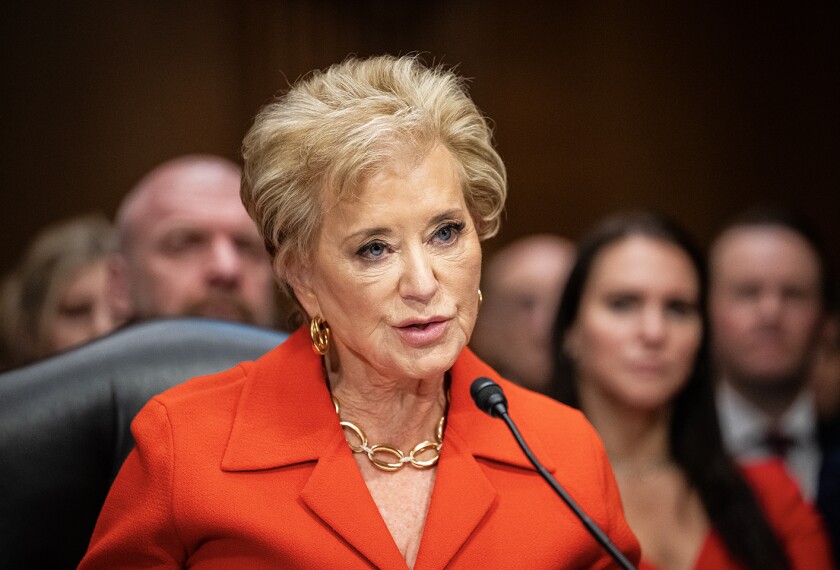Secretary of Education Margaret Spellings is known for her laser-like focus on the issues of student assessment and school accountability.
But last week, the secretary turned her attention to teacher quality in an Oct. 8 roundtable discussion with about a dozen performance-pay experts at the Department of Education’s headquarters.
Increasing the number of performance-pay programs has probably been the Bush administration’s biggest mark in the area of teacher quality. Through the Teacher Incentive Fund, established in 2006, the Department of Education has created or expanded 34 performance-pay programs in 19 states.
“I’m encouraged that we’re hearing more of this in the public square,” Ms. Spellings said, in a nod to the presidential candidates, Sen John McCain, R-Ariz., and Sen. Barack Obama, D-Ill., both of whom have expressed support for some version of performance-based pay on the campaign trail.
Although one of Secretary Spellings’ goals was to gain feedback on the federal role in supporting performance pay, much of the conversation focused on issues that are typically decided locally.
The experts, for example, discussed ways of structuring the programs to bridge traditional salary schedules, which base teachers’ pay on a combination of their experience and the credentials they hold, with schedules that differentiate pay based on student outcomes.
Federal officials “have not played a role in salary structures, and some of us do not want to play a role” in altering those structures, Ms. Spellings acknowledged.
Still, she expressed a desire to keep the ball moving on performance pay after she leaves office. That prospect remains unclear: A House subcommittee’s proposed 15 percent increase for the Teacher Incentive Fund for fiscal 2009, to $112 million, is in limbo. And the program has never even been officially authorized by Congress.
But Ms. Spellings remains optimistic.
“This has been very instructive for me, and I think it will be instructive for my successor and for folks on the Hill,” she said. “This is ‘to be continued,’ as far as I can tell.”





